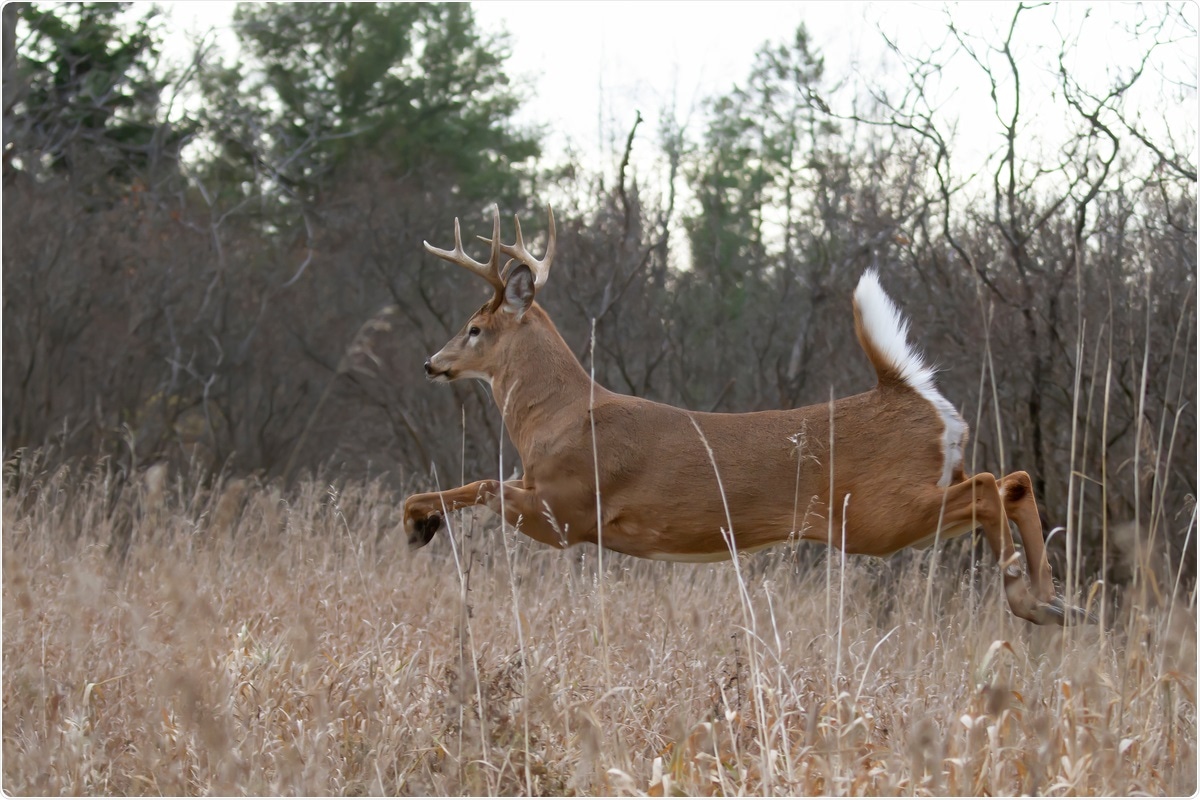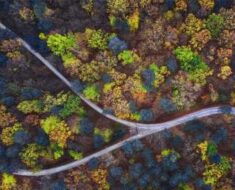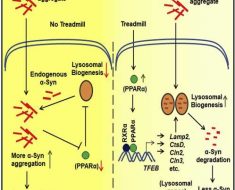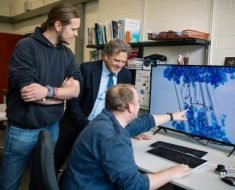An interesting new study in a population of wild deer in northeast Ohio shows repeated spillover of different lineages of the severe acute respiratory syndrome coronavirus 2 (SARS-CoV-2). This could facilitate the emergence of new variants of the virus and provide a non-human natural reservoir from where the virus could re-enter human populations.
 Study: SARS-CoV-2 infection in free-ranging white-tailed deer (Odocoileus virginianus). Image Credit: Jim Cumming/ Shutterstock
Study: SARS-CoV-2 infection in free-ranging white-tailed deer (Odocoileus virginianus). Image Credit: Jim Cumming/ Shutterstock
Background
SARS-CoV-2, the virus that causes coronavirus disease 2019 (COVID-19), has led to approximately five million deaths worldwide so far. This virus is thought to be zoonotic; it spilled over into humans from an animal species, though the latter has not been identified so far.
Natural SARS-CoV-2 infections have been recorded in domestic and wild animals, the latter under human care. These include many big cats, gorillas, mink, and some otters. Under laboratory conditions, more animals have been found capable of harboring the virus, from skunks, hamsters, fruit bats, and white-tailed deer.
Many such species were also able to transmit the virus between themselves, such as ferrets, cats, and dogs, which has been confirmed to occur in white-tailed deer. A computational model shows how the virus binds to the receptor on the host cell, the angiotensin-converting enzyme 2 (ACE2), in different species.
In some parts of the USA, such as Utah, free-ranging mink were found to be COVID-19-positive by reverse transcription-polymerase chain reaction (RT-PCR). These were thought to be minks that had escaped a mink farm. In Spain, too, a couple of mink were COVID-19-positive.
However, about 40% of sampled white-tailed deer in Michigan, Pennsylvania, Illinois, and New York show the presence of antibodies to this virus. This is a concerning issue since the virus appears to be capable of establishing itself in such new reservoirs, from where it can spill over to other animals or spill back into the human race.
This species not only has ACE2 receptors that have predicted high binding affinity for the virus but is experimentally shown to be susceptible to the infection and capable of its transmission.
What did the study show?
In the current study, available as a preprint on the bioRxiv* server, SARS-CoV-2 antibodies were identified in over a third of free-ranging deer in northeast Ohio. The species studied here are found in high numbers in various locations spanning rural to urban, in the USA, at more than 45 per square mile in some parts. They are both free-ranging and farmed, providing ample opportunity for deer-human transmission.
This species, Odocoileus virginianus, was sampled from nine locations across this region via RT-PCR between January-March 2021, a few weeks after the winter wave. This human-to-deer spread appears to have occurred at least six times over the winter wave of the pandemic.
Sites nearer centers of human habitation and more urban had a higher estimated prevalence of the virus. This period fits the highest estimated probability of transmission from humans to deer because of the high amount of circulating virus in humans and, thus, the environment.
Whole-genome sequences were available from six of the nine locations over ten dates. These reflected the same strains that were dominant at the time in the human population in Ohio. B.1.2 was found in four sites, B.1.596 at one site on two dates, and B..582 at one site. Alpha and Delta variants of the virus were not found; in humans, these became widespread after February 2021.
Phylogenetic analysis indicates that the transmission from humans to deer occurred at each site separately, involving a different variant of the B.1.2 virus. Deer may have spread the virus to each other at three sites since multiple samples were successfully sequenced, unlike the other sites.
There were seven deer sequences over two dates 23 days apart at one site, with B.1.596 sequences. These contained four unique mutations that have been identified in other viruses across the world but have not been found in the nearest human-derived viral sequences.
What are the implications?
The study findings call for further investigation into how the virus is spread, the transmission rate between or within deer species, viral mutations adapting the virus to these animals, and the potential for deer to serve as a non-human reservoir. The scientists concluded that already, the virus had been transmitted several times into the deer population, though the routes are unclear.
This type of pattern, seen during the periods of highest viral circulation in humans, was observed during the 2009 H1N1 influenza pandemic. The number of transmissions may have been still higher, depending on the presence of inhibitory factors in the samples, leading to their breakdown in some cases.
A systematic, detailed monitoring program will need to answer such questions, especially given the recent surge of Delta variant cases among humans. This will help understand if the variants that were transmitted last winter are still circulating among these animals.
Possible transmission routes may include wastewater, trash cans, backyard feeders, or bait stations, given the variety of settings in which human-deer interactions occur. In multiple studies, the contamination of waterways is a recurrent suggestion, bolstered by the isolation of the virus from tap water and wastewater. Between deer themselves, the route of spread could be via aerosols, the environment, or directly.
The occurrence of clinical disease among deer is also an important question to be answered. Males were found to have higher infection rates, perhaps due to their different behavior, such as larger home ranges, movement, and contact with other deer during fall/winter.
The researchers conclude: “Monitoring SARS-CoV-2 evolution in wildlife populations, including white-tailed deer, mustelids, rodents, and other susceptible species will be critical to future COVID-19 management and mitigation efforts.”
*Important notice
bioRxiv publishes preliminary scientific reports that are not peer-reviewed and, therefore, should not be regarded as conclusive, guide clinical practice/health-related behavior, or treated as established information.
- Hale, V. L. et al. (2021). SARS-CoV-2 Infection In Free-Ranging White-Tailed Deer (Odocoileus virginianus). bioRxiv preprint. doi: https://doi.org/10.1101/2021.11.04.467308. https://www.biorxiv.org/content/10.1101/2021.11.04.467308v1
Posted in: Medical Science News | Medical Research News | Disease/Infection News
Tags: ACE2, Angiotensin, Angiotensin-Converting Enzyme 2, Antibodies, binding affinity, Cell, Contamination, Coronavirus, Coronavirus Disease COVID-19, Enzyme, Evolution, Fruit, Genome, H1N1, Influenza, Laboratory, Pandemic, Polymerase, Polymerase Chain Reaction, Receptor, Respiratory, SARS, SARS-CoV-2, Severe Acute Respiratory, Severe Acute Respiratory Syndrome, Syndrome, Transcription, Virus

Written by
Dr. Liji Thomas
Dr. Liji Thomas is an OB-GYN, who graduated from the Government Medical College, University of Calicut, Kerala, in 2001. Liji practiced as a full-time consultant in obstetrics/gynecology in a private hospital for a few years following her graduation. She has counseled hundreds of patients facing issues from pregnancy-related problems and infertility, and has been in charge of over 2,000 deliveries, striving always to achieve a normal delivery rather than operative.
Source: Read Full Article





